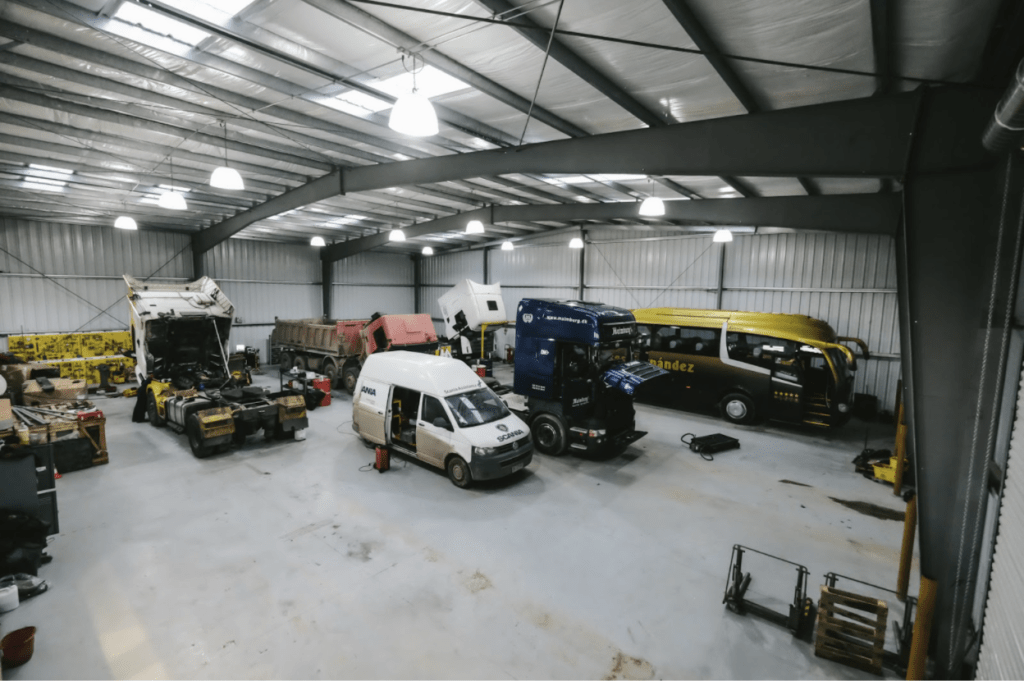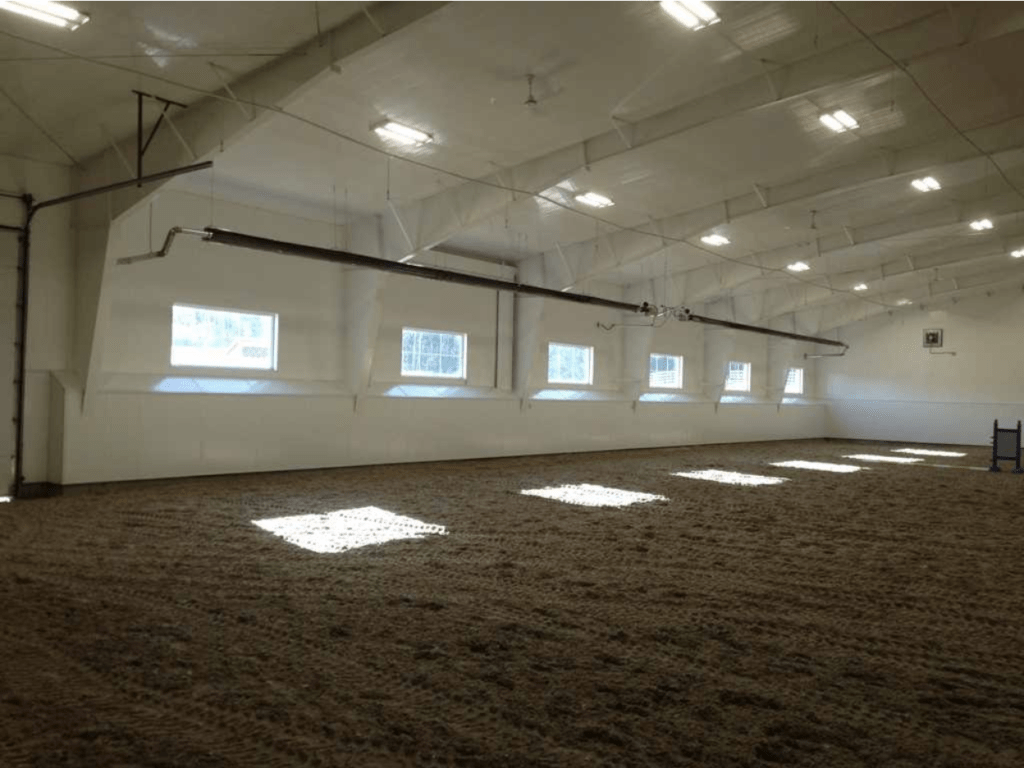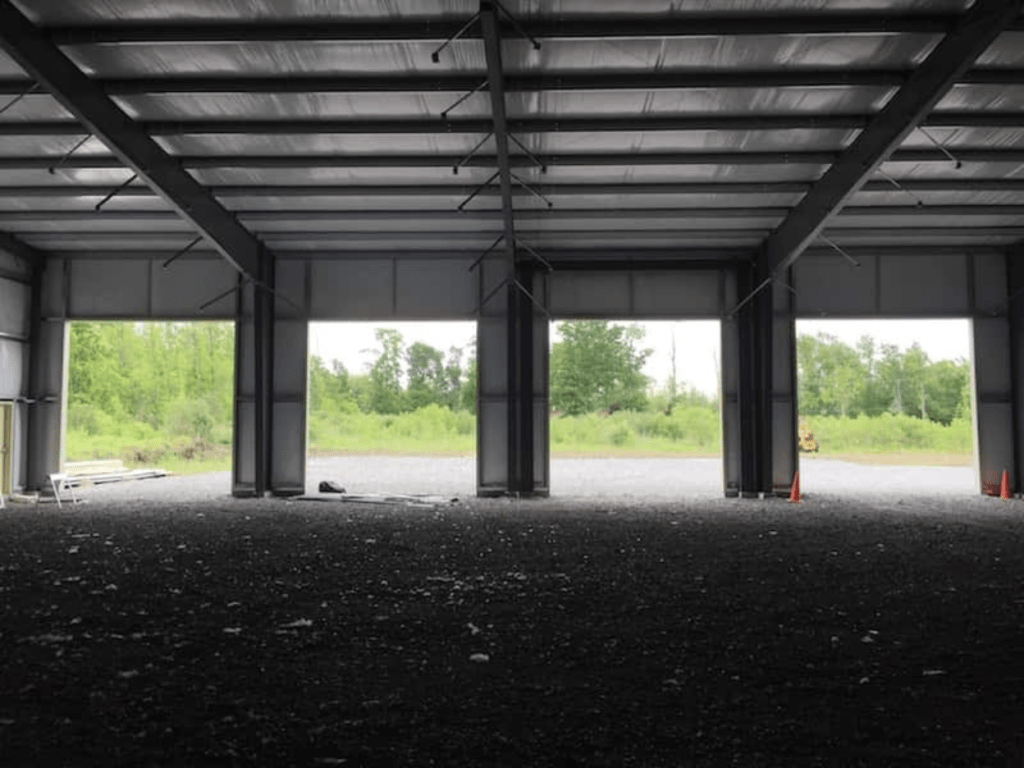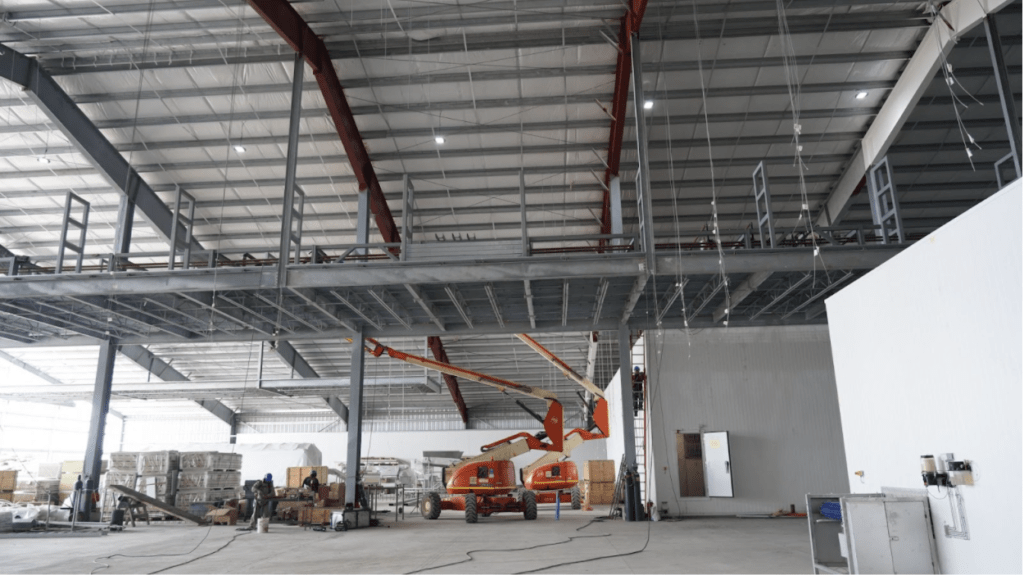Ventilate a Metal Building
Planning, designing, and pricing a metal building kit needs to include a metal building ventilation system based on your climate, building’s contents, and end-use. For instance, chemical or wet substances require more metal building exhaust fans than dry goods in relatively arid environments. In addition, agricultural metal buildings need to have proper metal barn vents to mitigate the dangers posed by ammonia and other corrosive airborne fumes.
Efficient metal shop ventilation systems protect your investment by regulating temperatures and reducing the risk of condensation and other moisture-related issues. They also help create a comfortable and healthy work environment – vital to a productive and financially successful company.
Why is Efficient Metal Building Ventilation So Important?
Adequate ventilation optimizes the performance and efficiency of metal buildings by controlling condensation, regulating temperatures, and preserving the air quality through natural and active ventilation (e.g., fans, wall vents, and building vents).
Prevent Condensation in your Metal Building
Condensation on metal leads to corrosion, lower insulation thermal performance, mold growth, and insect infestations. For example, unventilated air entering a building can bring significant humidity indoors, particularly in warm areas, creating an uncomfortable environment, accelerating metal panel weathering, and unhealthy and damaging mold. The situation worsens when the outside temperature falls below the inside temperature, and accelerates condensation development.
Regulating Temperature in Metal Buildings
Regulating and maintaining a metal building’s interior temperature cools the building, keeping it comfortable for the occupants during the warm months. Temperature regulation also can protect a building’s integrity from excess metal panel expansion and contraction. Expansions and contraction of metal panels can weaken the fastener’s integrity, allowing the panels to detach from the substrate.
Preserving Air Quality Inside a Metal Building
Adequate ventilation removes volatile organic compounds (VOCs) and other air pollutants detrimental to health and productivity. The Environmental Protection Agency (EPA) and the Occupational Safety and Health Administration (OSHA) guide for indoor air quality standards in commercial and institutional buildings sets the ventilation standards needed to ensure compliance.

How Building Size Affects Ventilation
The amount of ventilation required for a building depends on its size, along with its shape, location, and purpose. Typically 2,400 ft2 of metal building space requires a 10-foot ridge ventilator. However, large buildings occupied by people, animals, or valuable products require more careful consideration. In addition, an effective system requires cross-ventilation, meaning metal building roof vents need a louver near the floor.
Natural Metal Building Ventilation
Natural ventilation regulates the indoor climate and air quality by moving hot-humid-polluted air from the base of a building out through openings in the roof. However, because natural ventilation relies on prevailing winds and thermal convection to move the air, a metal building should include a hybrid ventilation system to ensure consistent adequate ventilation.
Benefits
Natural ventilation for a metal building provides many benefits, such as lowering operating costs and improving the structure’s indoor environmental quality (IEQ).
Lower Energy Bills
Natural ventilation systems rely on natural forces to operate, which reduces the building’s energy consumption, and saves significantly on energy bills.
Reduced Maintenance
Low maintenance natural ventilation reduces long-term building costs, as well as time and effort.
Improved Air Quality
Natural ventilation systems keep air flowing throughout the building, to improve air quality and the health, productivity, and concentration levels of the occupants.
Consistent Temperatures
Natural ventilation keeps each room or zone supplied with comfortable amounts of cool and warm air, which eliminates the need to adjust the system constantly.
Reduces Carbon Emissions
Natural ventilation lowers energy consumption, reduces carbon emissions and contributes to the building’s sustainability profile.
Components
Natural forces drive outdoor air through purpose-built building envelope openings like cross-ventilation (wind effect) and thermal buoyancy:
- Cross-ventilation naturally cools a building by relying on wind to force cool exterior air into the building through an inlet in the building envelope while forcing warm interior air outside through a roof vent or higher window opening.
- Thermal buoyancy ventilates a building by denser-cold air, lifting warmer air up and out of the building through roof vents or high window openings. Increasing the height and temperature differential increases the ventilation rate.
Purpose-built openings to enhance natural ventilation include windows, louvers, framed openings, turbine vents, and ridge vents.
Windows
Operable windows at the lower and upper levels of a building create a natural airflow that brings fresh air inside and allows hot, humid, and polluted air to vent. The process occurs when the less dense warm air rises towards the roof vents, creating a vacuum in the building’s lower level that pulls fresh air in through ground-level windows.

Louvers
Typically arranged as a framed set of blades affixed to a building, louvers enhance a building’s airflow and create resistance to rainwater, dirt, excessive noise, and severe winds.
Framed Openings
Framed openings (with operable doors) enhance ventilation and customization for a metal building.

Turbine Vents
Wind turbines sit at the tip of a roof, working with wind energy to actively move hot air upwards and out of the attic. In most cases, properly ventilating an attic requires two or three turbines.
Ridge Vents
Ridge vents install on a roof’s top ridge, and match the shingles for a subtle, sleek look. Ridge vents provide the best passive airflow and cover the square footage for attic ventilation.
Active Ventilation
Active ventilation uses mechanical, energy-consuming systems to circulate air, like steel roof vents.
Benefits
The active ventilation system consistently replaces stale-hot air with fresh oxygenated air, with:
Consistent Ventilation
Active ventilation provides ventilation throughout the day and night whatever the weather conditions
Regulated Temperature
Active ventilation systems regulate the temperature in a building by pulling hot air out, keeping the interior cool.
Moderate Humidity
Mechanical ventilation, like exhaust fans, moderates humidity by removing moist air.
Enhanced IEQ
Active ventilation exchanges humid, hot, and polluted air with fresh, clean outdoor air, improving the comfort and safety of the buildings.
3 Types of Arrangements
Active ventilation with powered forced supply and powered forced exhaust systems do not rely on prevailing winds, and effectively work at all times, guaranteeing the building’s air change rate and pressure.
Powered forced supply/powered forced exhaust can consistently ventilate a metal building, regardless of the exterior conditions like wind, outside ambient temperature, building height, etc.
Powered Supply
Motorized supply fans, mounted in the perimeter wall of a building, 8 to 10 feet above the floor, divert air back down to the floor level.
Powered Exhaust
Mechanical exhaust fans, mounted in the roof of buildings above high heat-generating processes, direct hot and humid air out of the building.
Powered Supply and Exhaust
Motorized supply and exhaust fans provide an effective way of generating airflow to the center of the building, which creates a cool, comfortable, and productive environment for the occupants.

Components
Active ventilation components mechanically supply fresh air while exhausting hot, humid, and polluted air.
Supply/Exhaust Fans
Supply ventilation fans draw outside air into the building, to create positive pressures, which causes an equal amount of inside air to leak through cracks in the building envelope, ducts, vents, or window and outlet openings.
Exhaust ventilation fans, commonly used in bathrooms and kitchens, create negative pressures in living spaces, bringing outside air into the building through vents and leaks in the building envelope.
Dampers
A damper valve or plate stops or regulates airflow inside a chimney, duct, air handler, VAV box, or other air-handling equipment. For example, a damper can cut off the central air conditioning (heating or cooling) to unused spaces. It can also apply room-by-room temperature and climate control.
HVAC Systems
HVAC (Heating, Ventilation, and Air Conditioning systems) heats and cools a building. An HVAC system can include furnaces, air conditioners, heat pumps, ductwork, thermostats, and other building comfort controls.
Understand Your Ventilation Needs with Allied Steel Buildings
Allied Steel Buildings makes ridge ventilators and wall mount louvers designed to control the movement of fresh air through a metal building, while removing hot, contaminated, and stagnant interior air. A well-ventilated metal building creates a comfortable, healthy, energy-efficient, low-maintenance, and productive indoor environment – all vital components of a successful business.
Don’t hesitate to contact Allied Steel Buildings today to help specify the exact ventilation requirement for your project.
